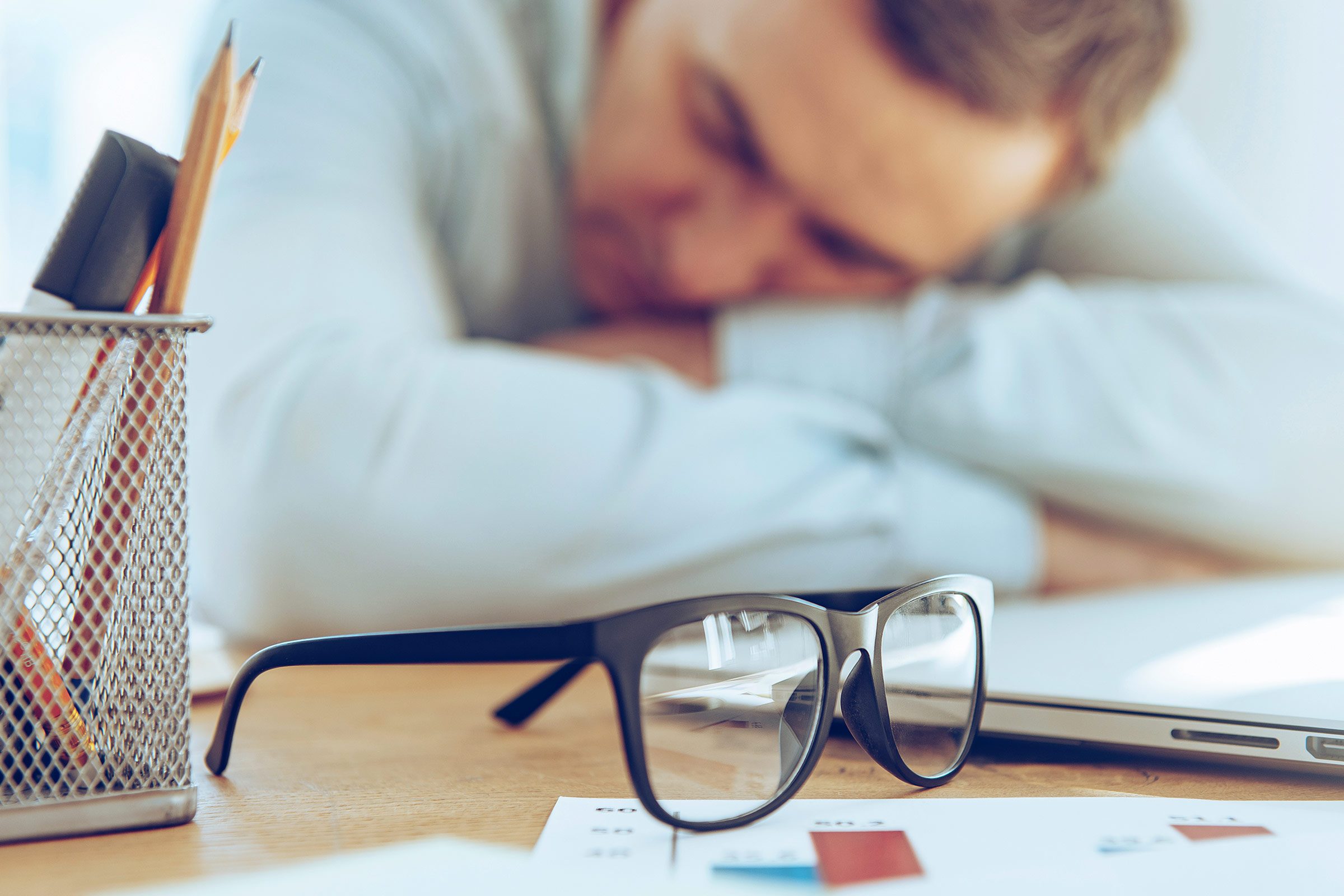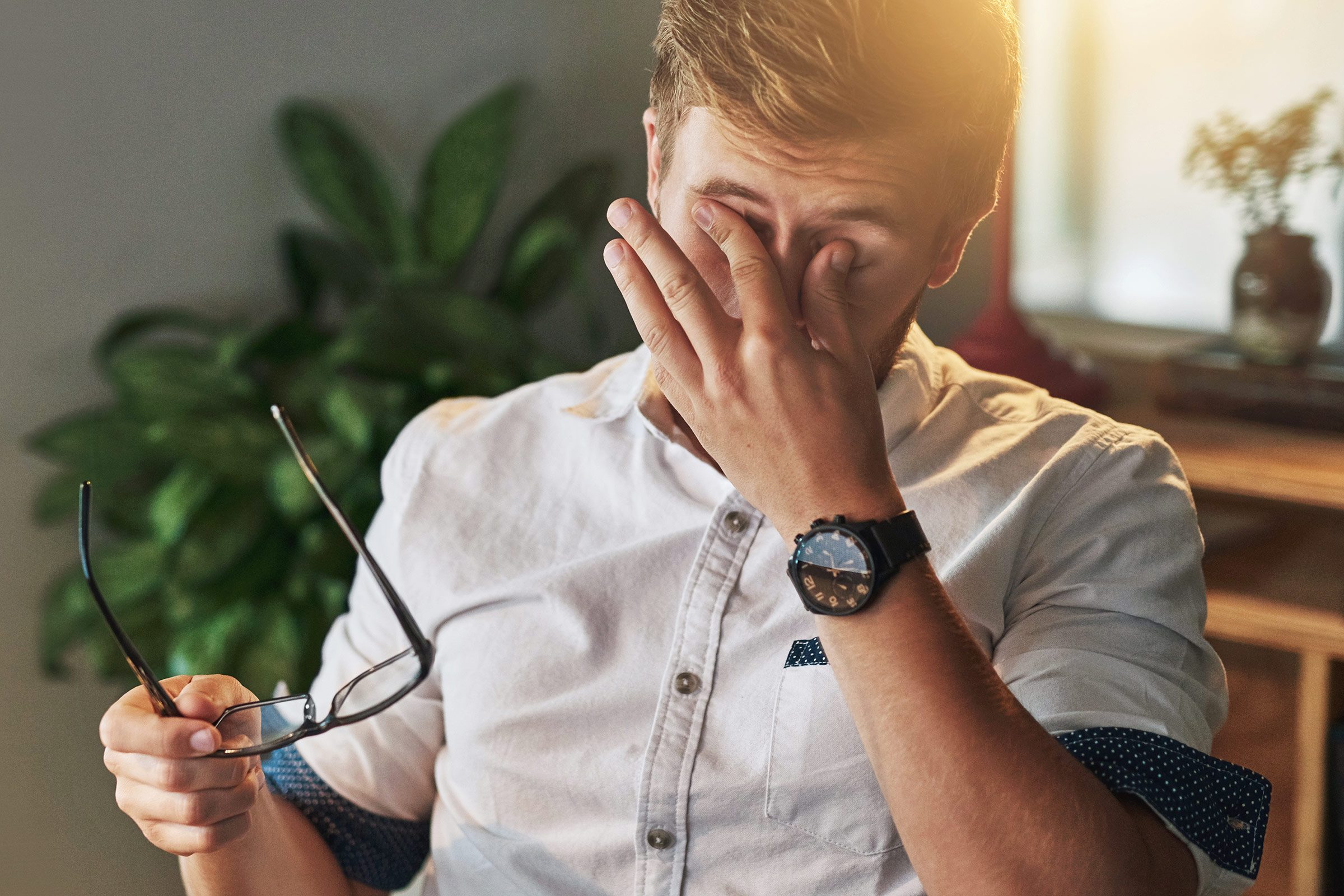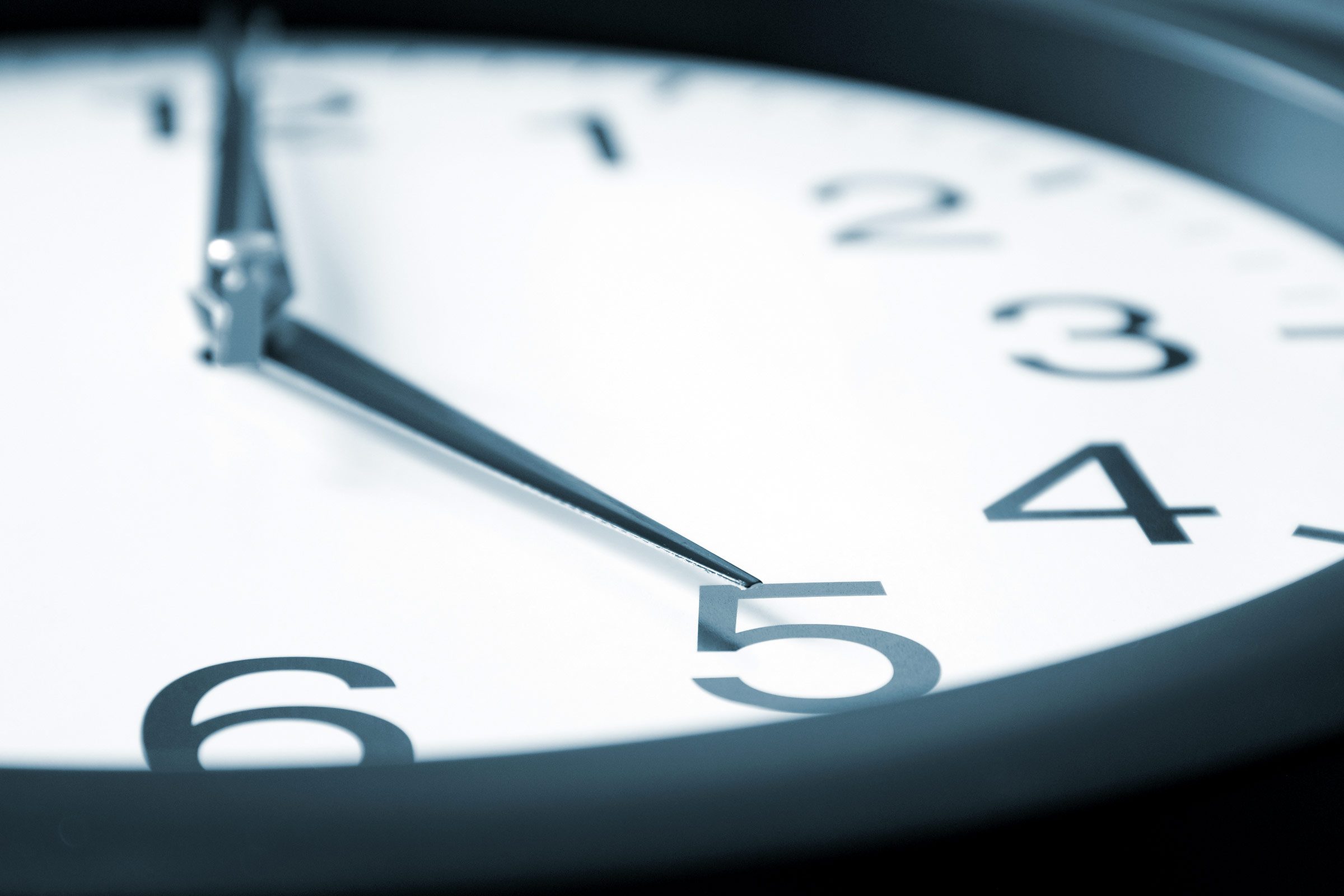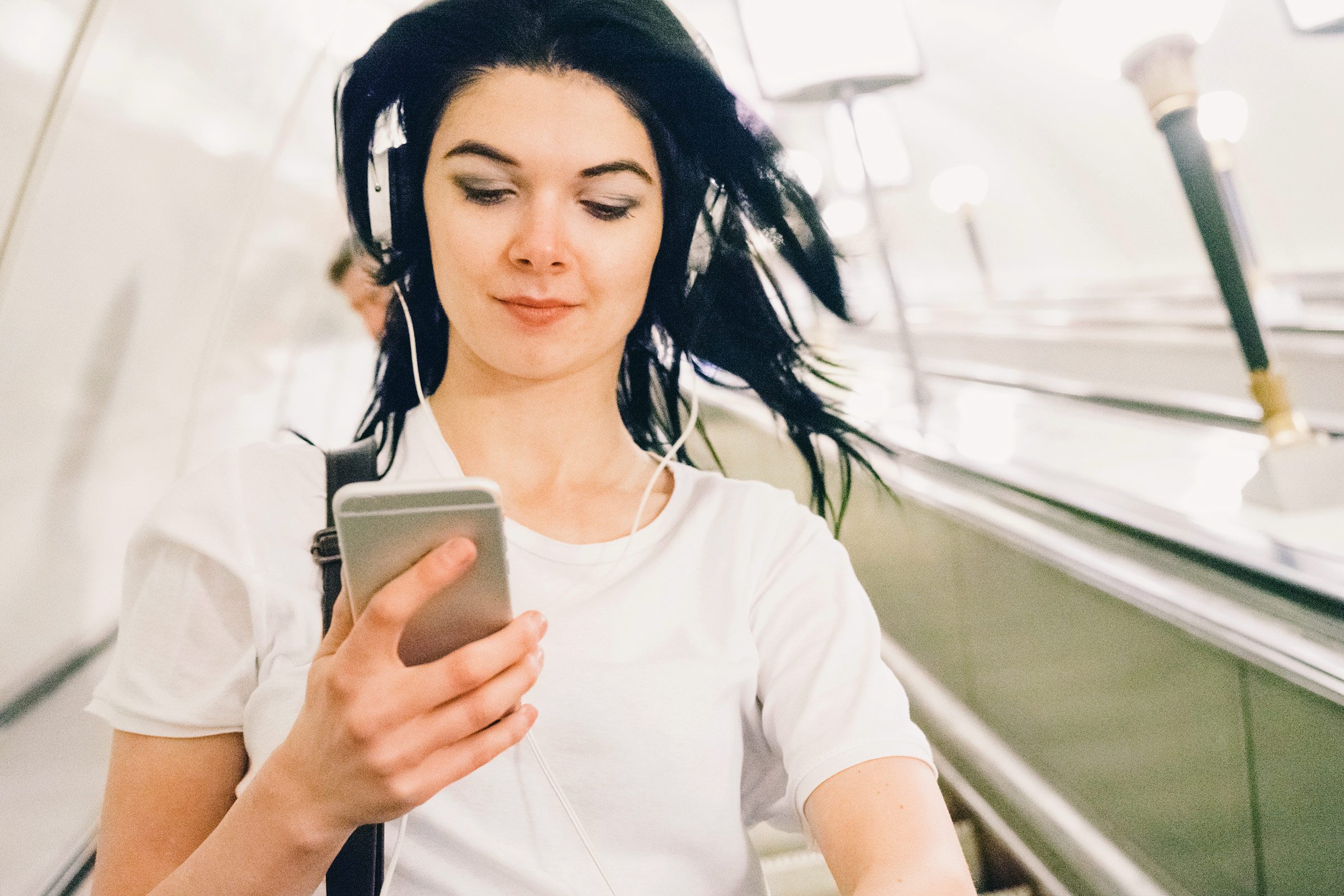
6 a.m.: Waking Up
Tried and true: Set your alarm 15 minutes earlier than you actually need to wake up, so you can rise gradually and mentally prepare for the day ahead.
Expert tip: Go to sleep with your blinds at least halfway open: When the sun flows in, your brain will slow its melatonin production and start generating adrenaline, so you’ll be half-awake by the time your alarm goes off.
App for that? The Sleep Cycle alarm clock ($0.99, iPhone) analyzes your sleep patterns and wakes you up when you’ll feel most rested.

7 a.m.: Before Your Commute
Tried and true: Have a small breakfast to kick-start your metabolism.
Expert tip: Even something as simple as string cheese with an apple and roasted nuts will help you stay energized—protein and calcium are key.

8 a.m.: On the Way In
Tried and true: Living close to the office might help perk you up. Researchers say commuting contributes to stress, exhaustion, and days missed from work.
Expert tip: If the commute’s unavoidable, simple mental exercises can help cut through the tension: You can meditate whether you’re sitting or standing on a bus or train, and you can take advantage of pauses while driving by practicing mindfulness.

9 a.m.: Take a moment to get organized
Tried and true: A cluttered desk can cause stress, but it’s not exactly easy to find the time to clean one up. The early morning, before tasks pile up and meetings come together, actually makes a great time to do so.
Expert tip: Before you launch into your inbox, take a minute or two—five, even—to collect yourself and your papers. Sort through what’s essential and recycle everything that’s not. Some say that the trick to staying focused is to do all of this while standing.
App for that? Evernote (free; available on a variety of platforms) can drastically cut down on your desk mess with its virtual notebooks and organizational tools. Just be careful: Even digital notes can pile up if you don’t stay on top of them.

10 a.m.: Time for coffee?
Tried and true: One professor of medicine at Harvard Medical School calls coffee a “lifesaving miracle drug”, but when it comes to its ability to wake you up, a lot can depend on your habits. Too much coffee can lead to stress and even quirks in perception, so resist the urge to double down in one morning.
Expert tip: If you’ve held out, 10 a.m. could be a good time to have a cup: since caffeine takes about 45 minutes to fully absorb, you’ll be covered for a good chunk of the morning, and you won’t have wasted any of your buzz before work’s really underway.
App for that? CaffeineZone ($0.99; iPhone) graphs your caffeine intake and lets you know when the right time to refuel is. It also warns you if you might expect too much of a buzz based on when you expect to go to sleep.

11 a.m.: Skip the snack
Tried and true: Mid-morning munchies happen, but they may not do a whole lot to boost your energy level. Plus, a recent study suggests that they can obstruct weight loss.
Expert tip: Eating a snack shortly after breakfast probably isn’t necessary depending on the timing of your lunch—one registered dietitian at SHAPE calls it “mindless eating” that isn’t based on hunger. She suggests keeping at least three, and no more than five, hours between meals, so keep your schedule in mind as the morning goes on and your stomach starts to growl.

12 – 1 p.m.: Lunch
Tried and true: Eat away from your desk if at all possible to avoid a variety of health concerns, including serious bacteria. Nothing will sap energy like getting sick and staying in your chair all day.
Expert tip: Try to take a 20-minute walk after lunch to boost your levels of dopamine, norepinephrine, and serotonin, all of which will give you more energy when you return to work.
App for that? Fleetly (Free; iPhone and web browser) allows you to log any exercise and track your progress in a compelling way: you earn points for every physical activity and obtain medals for fitness milestones. Seeing those numbers surge should provide more incentive to take that post-lunch walk.

2 p.m.: Sneak a nap in
Tried and true: The prospect might sound a bit nutty, but consider this: Getting a little shuteye doesn’t have to take much longer than a bathroom break or brewing a new pot of coffee.
Expert tip: According to Prevention, a mere 10 minute rest at 2 o’clock will boost your energy for the rest of the day. It’s certainly worth a shot if you have a good spot available to you—try your car if there isn’t vacancy in the office.

3 p.m.: Check on your eyes
Tried and true: Your eyes can get tired, too, which can make you feel bogged down. Try to stand up and take water breaks throughout the day to stay refreshed.
Expert tip: Follow the 20-20-20 rule: Look at something 20 feet away from your monitor for 20 seconds every 20 minutes.
App for that? Workrave (Free; Windows) and AntiRSI ($5.99; Mac) offer automated reminders to take breaks, meaning no more unhealthy work-related distractions.

4 p.m.: The home stretch!
Tried and true: There are several easy stretches you can do quickly at your desk, all of which can help you refocus on work. Men’s Health offers seven, most of which can be done without leaving your chair.
Expert tip: Try an exercise like the upper cervical spine flex every time you click “reply.”

5 p.m.: Wind down
Tried and true: It’s not always possible to leave right when the clock strikes 5—or 6, or whatever the end of your 8-hour workday might be—but try to get as close as possible. According to one study, working overtime can take a toll on your ticker, leading to serious health problems down the line.
Expert tip: Don’t rush out of the door. Instead, make sure you wind down properly: doing so will keep your energy up and spirits lifted as you head home. Have a chat with co-workers or watch a funny video before packing up.
App for that? Video Time Machine ($2.99; iPhone) puts thousands of curated videos in the palm of your hand, arranged by year and subject. Zero in on your pop culture sweet spot for an instant lift in mood.

5 – 6 p.m.: On the way home
Tried and true: This is a good time to rock out. If you’re a music lover who’s spent all day in relative silence, take the opportunity to pump up the volume a bit and unwind.
Expert tip: It’s just as important to practice mindfulness during your evening commute as it was in the morning—think of it as an opportunity to check back in with yourself and bring the day full circle. Plus, focusing on what’s going on internally can help calm you down in the often stressful rush to get home.
App for that? Pandora (Free; Android, iPhone, Blackberry, Palm Pre) is a fan favorite that provides streaming radio based on your music taste, meaning you’ll discover new bands and songs as you cycle through your standbys. Spotify (Free with $9.99 subscription to Spotify Premium; iPhone, Android, Blackberry) lets you zero-in on high quality music of your own choosing, making it great for those with specific audio affinities.

9 p.m.: Before bed
Tried and true: To ensure another energized 9-5, you’ll want to squeeze the most out of your nighttime shuteye. There’s more to it than shooting for eight hours of rest, though. Avoid bright screens—computers, smartphones, and TV—before you go to bed.
Expert tip: Try a hot bath 30 minutes in advance, and keep a cup of water at your bedside: If you wake up feeling hot, lowering your body temperature will help you get back to sleep.
App for that? f.lux (Free; Mac, PC, Linux, iOS) makes the color of your device’s screen adapt to the time of day, which gives your eyes a rest and you a better shot at sleeping well.